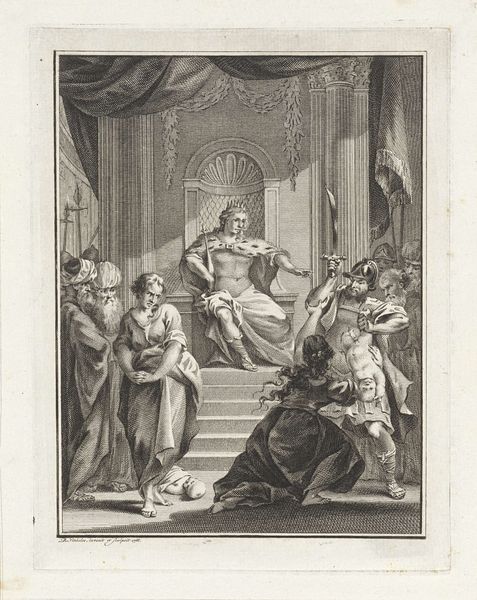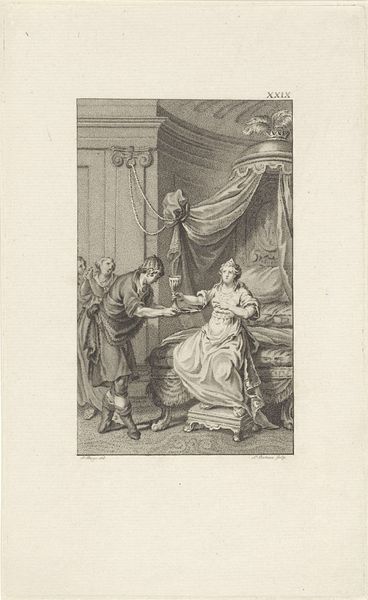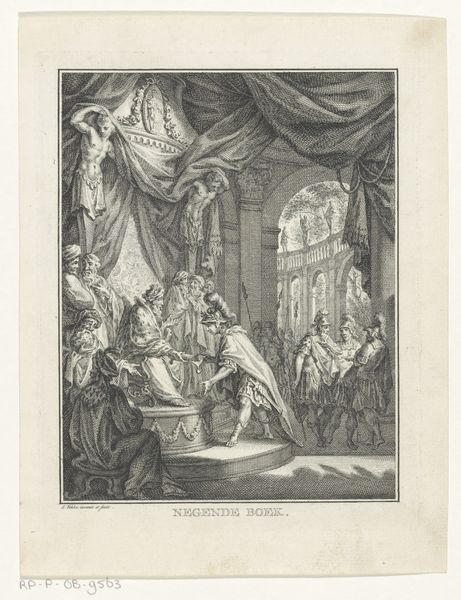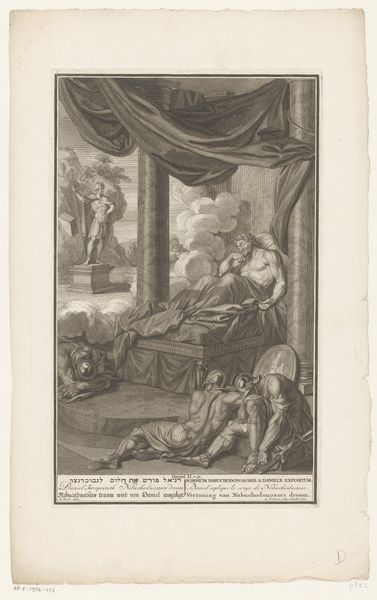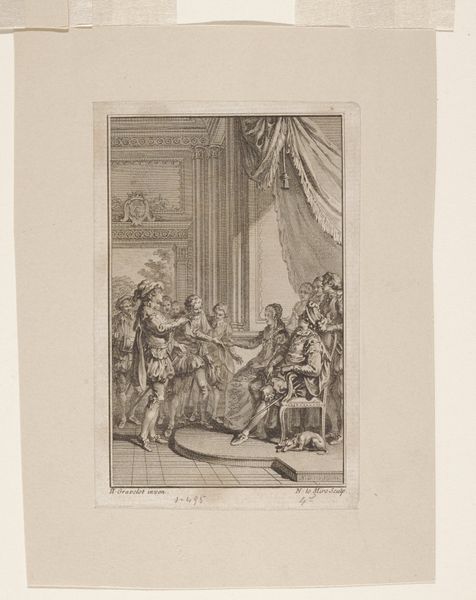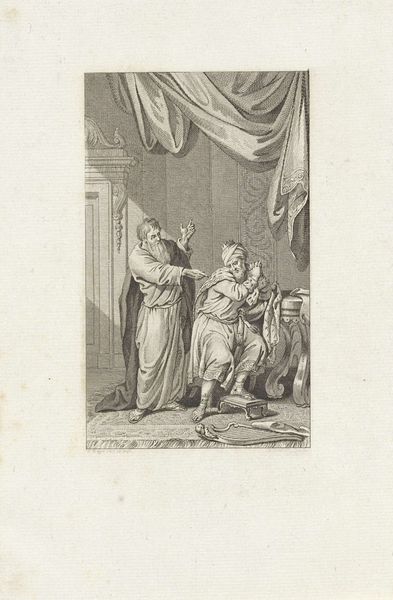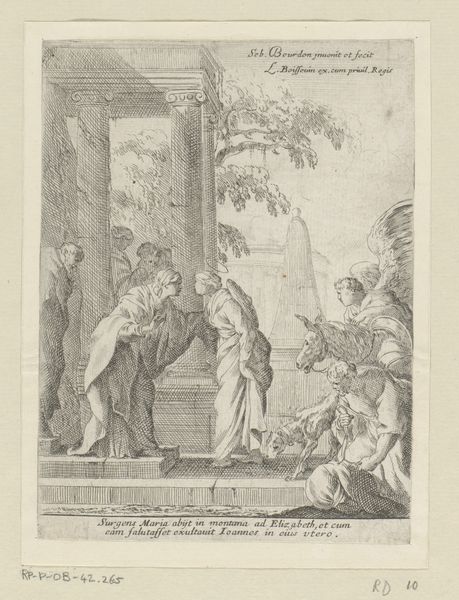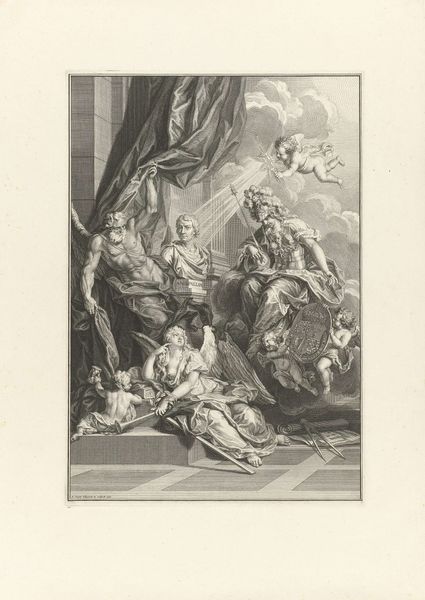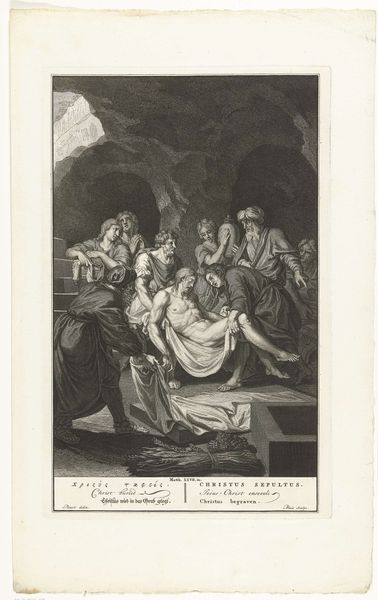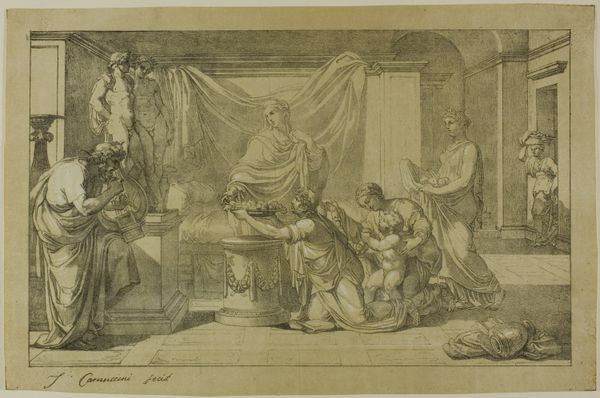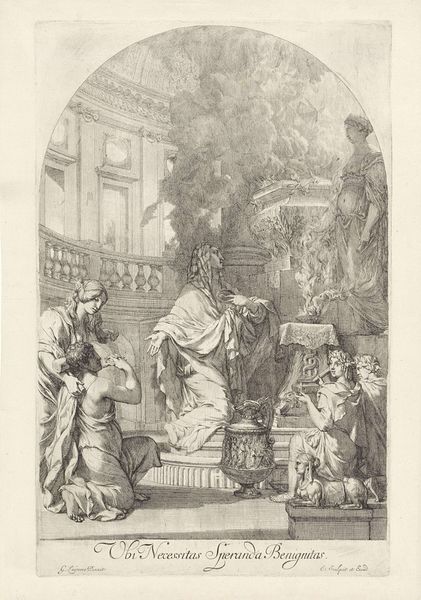
print, engraving
#
portrait
#
pencil drawn
#
allegory
#
baroque
# print
#
old engraving style
#
figuration
#
line
#
history-painting
#
engraving
#
realism
Dimensions: height 420 mm, width 247 mm
Copyright: Rijks Museum: Open Domain
Curator: Immediately I see elegance… that crisp, classical staging. It has a quiet intensity, like holding your breath before singing a note. Editor: Indeed! This is "The Clemency of Scipio," an engraving by Pieter Tanjé, dating back to 1737. It is currently held at the Rijksmuseum. We're looking at a scene lifted from Roman history, charged with questions of power, virtue, and the spoils of war. Curator: Those supplicant figures... Their expressions feel complex, like gratitude mixed with profound disquiet. What exactly are they offering, I wonder? Is it freedom or simply their submission? It seems like everyone, including Scipio himself, seems caught in a heavy moment of moral contemplation. Editor: They are offering Scipio gifts to pay for the ransom of a captured woman who is believed to be of great beauty and virtue, as were central to many social, legal and religious structures. Tanjé situates this historical moment within Baroque visual traditions, framing these negotiations within existing hierarchies and artistic standards. What are your thoughts on his specific formal choices? Curator: Baroque… yes, but almost restrained. It lacks some of the bombast. Perhaps Tanjé wants to foreground the moral struggle instead? Those lines, the stark contrasts… It amplifies the gravity of their meeting. Also, the printmaking… how amazing it must have been to imagine this drama unfold simply with lines! Editor: Agreed. The starkness does redirect our attention. In considering his method of production and the medium of printmaking itself, we have to understand this engraving was more than artistic exercise: It served as a critical tool to circulate not only artistic ideals, but social and moral standards in that historical moment. Tanjé isn't simply telling a story; he is actively shaping public perception of what constitutes "virtue". Curator: It's strange how virtue and power often dance so close. In many ways this remains a timeless visual reflection. It resonates even now… that strange interplay. Editor: It makes one wonder whether "clemency" serves the oppressed, or those who hold dominion above them. It serves as a powerful reminder to inspect acts of clemency through the very specific history and relations that shape the virtues behind these performative moral statements.
Comments
No comments
Be the first to comment and join the conversation on the ultimate creative platform.
